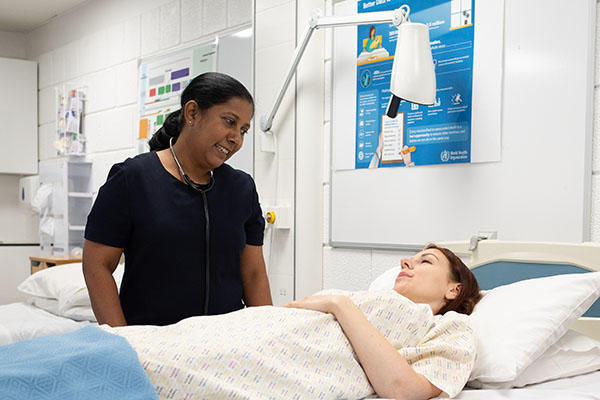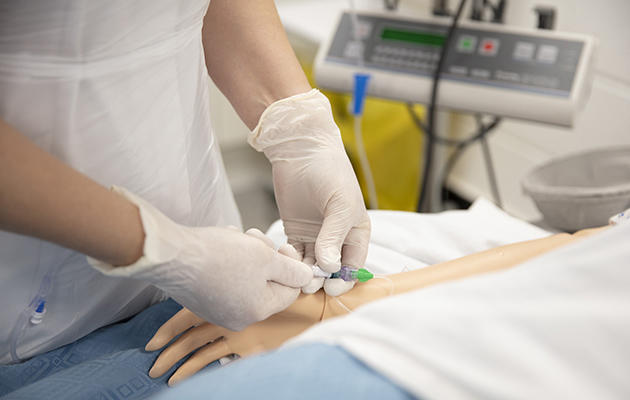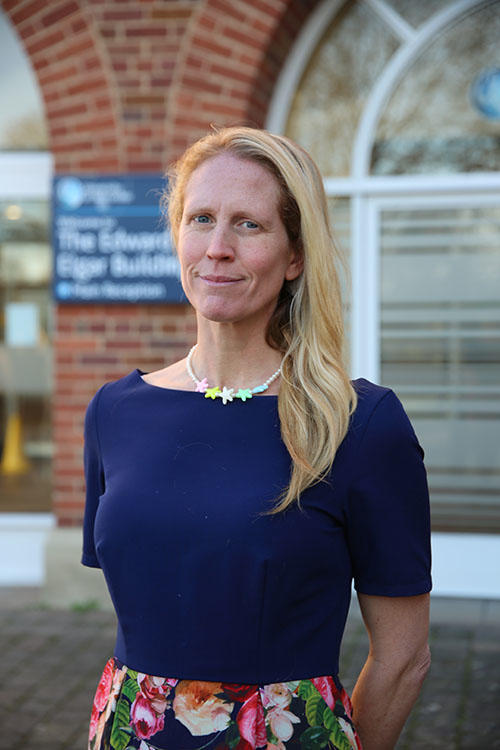Dr Lauren White is the Simulation and Interprofessional Learning Lead at the
Three Counties Medical School and a Consultant in Stroke and General Medicine at Worcester Royal Hospital. In this blog, she discusses a day in her life working within the medical industry.
One of the best parts of becoming a doctor is the sheer variety of the pathways you will be able to pursue. Once you have qualified you might decide to become a surgeon, a paediatrician, a GP or like me a physician - the variety is endless.
I specialise in Stroke Medicine meaning I care for people who have had everything from a mini-stroke (or TIA) to people who have had devastating life ending strokes. Whatever path you choose in Medicine there are 2 things that are guaranteed. Firstly, no day is ever the same (and it is never boring) and secondly, you are never alone – being a doctor means being part of a team. To give you an idea of what I mean I will share with you - a day in my life.
Lets take a typical Monday (my on-call day). I am also mum to 3 kids and married to a surgeon so sometimes life is busy.
6:30am – Wake up and go for a run outside. I do this most days as its almost the only time I get to myself. Having a hobby outside of Medicine is very good for my mental health.
7:00am – Wake the kids and help them get washed, dressed and ready for school.

8:30am – Arrive at work. It’s a Monday so I am on call. My first job is to check through the TIA clinic referrals from GPs or the Emergency Department (ED). These will be patients that have been to see their GP or come to ED with symptoms that might have been a stroke – but the symptoms have usually resolved. I triage these patients to decide which ones need to be seen in TIA clinic that day and what investigations they might need before they are seen. The investigations might be a CT scan of their head, an ultrasound scan of their neck, blood tests or an ECG. After I have triaged the patients, the TIA clinic nurse will arrange for them to come up to clinic later that morning to see one of my colleagues.
9:00am – Board round. This is a meeting of the whole multidisciplinary team including physiotherapists, occupational therapists, nurses, and people from speech and language and social work, junior doctors and other consultants. We discuss all the patients on the ward briefly making a plan for the day ahead. This is a vital part of the day as it means everyone has the opportunity to give their opinions about how the patients are progressing or to raise any concerns. We usually have 25 patients (so just 1 minute per patient!).
9:30am – After board round I will head to the ED to see any patients that have been admitted overnight and I will collect the bleep so that I can be alerted to any patients coming in. Typically there will be 3 or 4 stroke patients who have been admitted overnight. This might include people who have minor weakness of their arms or legs. Other admissions might include individuals who have had a catastrophic bleed into the brain. Sometimes these patients will need further investigations and sometimes they might require discussion with other teams like Neurosurgery or Vascular - as they might need an operation. I spend lots of my time discussing options with patients and relatives and liaising with other specialities so that patients get the best care.

11:00am – Typically there will be acute referrals for new admissions. The stroke nurses might take a phone call from an ambulance to say that they have a patient that has had sudden onset of right arm and leg weakness and are unable to speak. This could represent a serious stroke that requires a time critical intervention. In this case we will meet the ambulance (and the patient) at the door to the ED and take them immediately to the CT scanner where I will determine if they are a candidate for life-altering treatment like thrombolysis and thrombectomy. These interventions are time critical and require the whole team to act quickly. We often have only minutes to give the acute treatment or to arrange transfer to a tertiary centre for ongoing treatment.
5:00pm (or more usually 6:00pm) – I will have finished seeing as many patients as I can in the ED and I will go home. But my day isn’t over!

From 5:00pm on Monday till 9:00am on Tuesday I am on call from home. This means that if anyone has a question about a patient with a stroke or there is a new admission I will be called on to give advice. I can have up to 20 calls overnight (although typically it's less).
Whilst this is a typical day, it is true to say that there is “no typical day”. My daily life as a doctor involves using everything from carefully thought-out interpersonal skills - i.e. communication with patients to maintaining up to date scientific knowledge. Certainly, as a career, being a doctor is one of the most diverse and challenging there is.
A degree in Medicine, at TCMS, will provide you with opportunities to explore all the varied pathways and equip you with the skills to make the most of these opportunities.
Dr Lauren White teaches on the Medicine MBChB and Physician Associate MSc in the Three Counties Medical School.
Stay up to date with the latest information by following the Three Counties Medical School on Twitter.